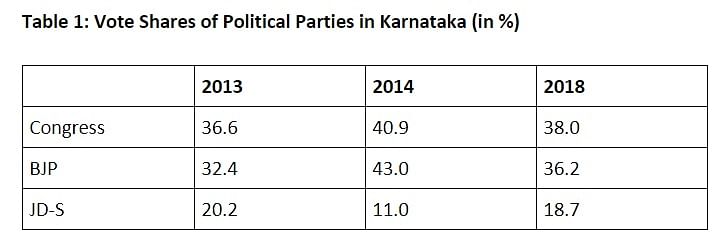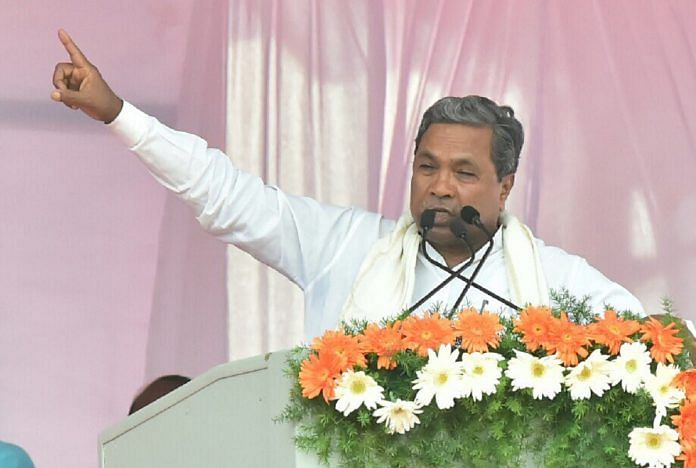Congress faces an adverse vote to seat ratio in Karnataka. The party needs a much higher overall vote share as compared to the BJP for a similar number of seats.
Defying all the predictions of a split verdict, the BJP has emerged as the single largest party in the 2018 Karnataka assembly election. How did the BJP manage to surpass all expectations? More importantly, why did the Congress do so badly?
Undoubtedly, this election was too close to call. The provisional vote shares of both the BJP (34.8 per cent) and the Congress (35.7 per cent) reflect this. The BJP had won 43 per cent vote share in 2014 and even at its worst moment in 2013, the combined vote share of BJP along with KJP (B.S. Yeddyurappa) and BRSCP (B. Sreeramulu) was approximately 33 per cent. Thus, the BJP was very much in contention to return as the frontrunner.
Further, Prime Minister Narendra Modi’s ability in wooing the late deciders in BJP’s favour along with the party’s much-acclaimed campaign machinery involving panna-pramukhs makes it one of the most formidable election machines ever. The BJP’s adeptness in overturning a gap in the last lap of campaigning has ensured that the party largely retains the social coalition it had built in 2014.
In the Lok Sabha elections, the BJP had made inroads among Vokkaligas, Dalits and other backward communities that are largely aligned with the Congress and JD(S). Perhaps this provoked Siddaramaiah to play the Lingayat card, which as we had pointed out, was unlikely to work. The BJP has nurtured the community’s support base for close to two decades now. The Congress’s gambit for winning back Lingayats in a way failed or perhaps even backfired.
Why did Congress fare so poorly? A careful reading of the result would suggest that the party has, in fact, gained in terms of vote share in comparison to 2013. The seat tally, however, tells a different story. Why could Congress not win as many seats even with an increased vote share?
First, Karnataka has a peculiar asymmetry as the Congress faces an adverse seat to vote ratio. The party’s vote share is evenly distributed across all regions of the state, while the BJP has concentrated pockets of strength. Thus, the Congress needs a much higher overall vote share as compared to the latter for a similar number of seats. Second, in 2013, the Congress had a favorable vote-seat ratio due to splitting of BJP’s vote with KJP and BRSCP. These factions of the BJP merged in this election, which made seat conversion an uphill task for the Congress. Thus, in case both Congress and BJP succeed in retaining their core support base, as happened in this election, the Congress had a difficult time converting votes into seats.
Another thing which might have happened – but one will have to wait for detailed results to analyse the numbers – is the possibility of local level tactical understanding between the JD(S) and the BJP in the old Mysuru region. This may have turned one of Congress’ safest pocket boroughs into its waterloo. This may have also helped JD(S) in holding onto its seat share despite a slight decline in its vote share as compared to 2013. In case the BJP fails to get outright majority, the JD(S) will be the biggest beneficiary. It will rejuvenate a party that was surely going downhill. Though the final results would be known in few hours, it’s likely that the drama over government formation may continue for few days.
What are the implications of this verdict on 2019 elections? The results are naturally going to boost the confidence within the BJP’s rank and file, especially after a series of losses in bypolls. However, this also portends a danger of overconfidence within the BJP. As for Congress, the loss in Karnataka means that the emergence of a strong nationwide pre-election coalition with the Congress at the helm, by consensus, has become a remote possibility.
Table 1: Vote Shares of Political Parties in Karnataka (in %)

Note: 2018 figures are based on provisional estimates available on the ECI website
The writers are PhD students in political science at University of California at Berkeley, US.



